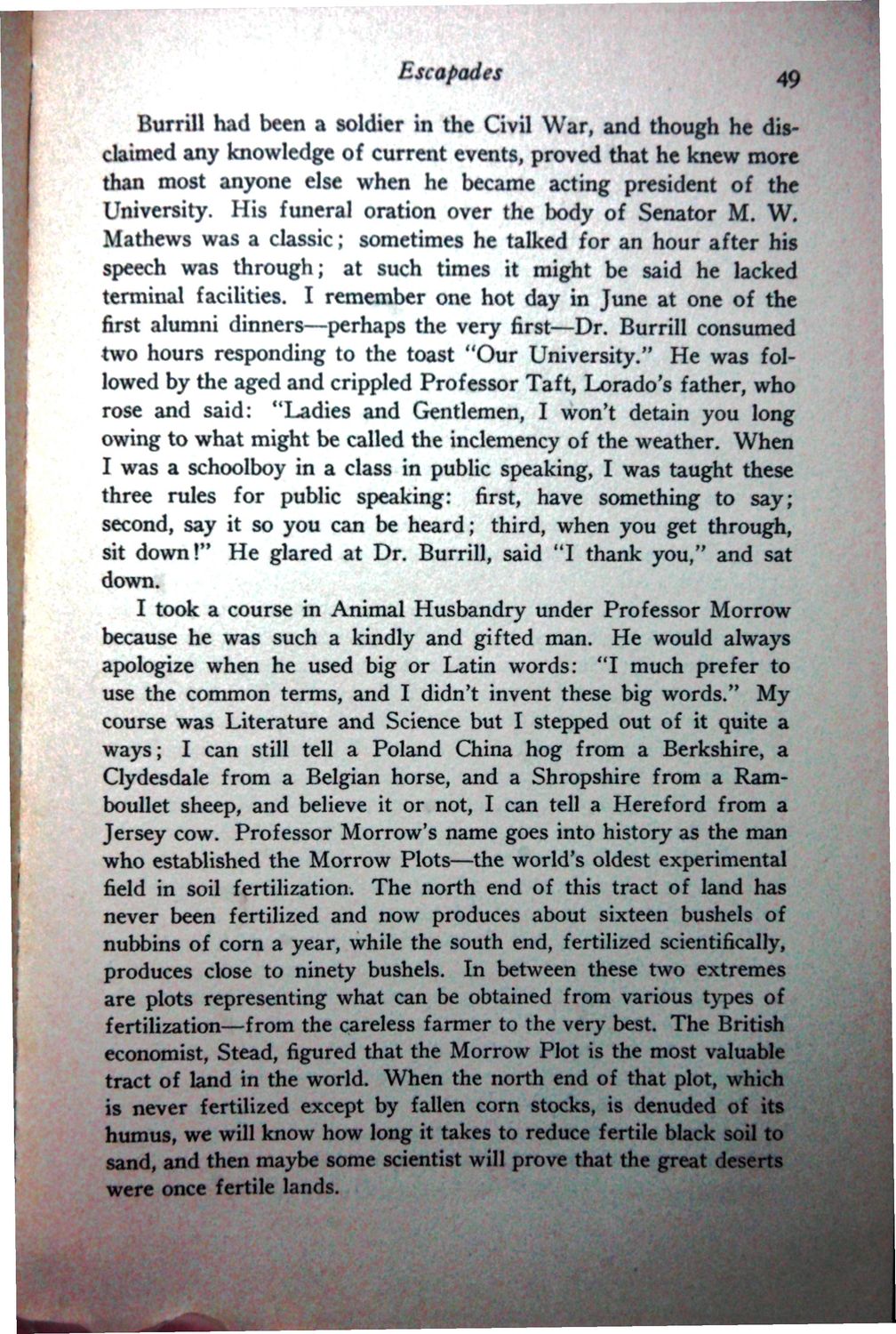| |
| |
Caption: Book - Banks of the Boneyard (Charles Kiler)
This is a reduced-resolution page image for fast online browsing.

EXTRACTED TEXT FROM PAGE:
Escapades 49 Burrill had been a soldier in the Civil War, and though he disclaimed any knowledge of current events, proved that he knew more than most anyone else when he became acting president of the University. His funeral oration over the body of Senator M. W. Mathews was a classic; sometimes he talked for an hour after his speech was through; at such times it might be said he lacked terminal facilities. I remember one hot day in June at one of the first alumni dinners—perhaps the very first—Dr. Burrill consumed two hours responding to the toast "Our University." He was followed by the aged and crippled Professor Taft, Lorado's father, who rose and said: "Ladies and Gentlemen, I won't detain you long owing to what might be called the inclemency of the weather. When I was a schoolboy in a class in public speaking, I was taught these three rules for public speaking: first, have something to say; second, say it so you can be heard; third, when you get through, sit down!" He glared at Dr. Burrill, said "I thank you," and sat down. I took a course in Animal Husbandry under Professor Morrow because he was such a kindly and gifted man. He would always apologize when he used big or Latin words: "I much prefer to use the common terms, and I didn't invent these big words." My course was Literature and Science but I stepped out of it quite a ways; I can still tell a Poland China hog from a Berkshire, a Clydesdale from a Belgian horse, and a Shropshire from a Ramboullet sheep, and believe it or not, I can tell a Hereford from a Jersey cow. Professor Morrow's name goes into history as the man who established the Morrow Plots—the world's oldest experimental field in soil fertilization. The north end of this tract of land has never been fertilized and now produces about sixteen bushels of nubbins of corn a year, while the south end, fertilized scientifically, produces close to ninety bushels. In between these two extremes are plots representing what can be obtained from various types of fertilization—from the careless farmer to the very best. The British economist, Stead, figured that the Morrow Plot is the most valuable tract of land in the world. When the north end of that plot, which is never fertilized except by fallen corn stocks, is denuded of its humus, we will know how long it takes to reduce fertile black soil to sand, and then maybe some scientist will prove that the great deserts were once fertile lands.
| |